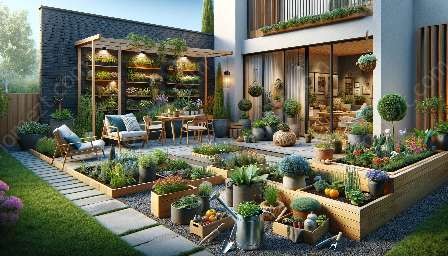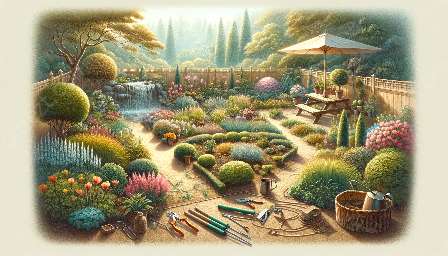Garden Design: An Overview
Garden design is the art and process of creating plans for the layout and planting of gardens and landscapes. It is both functional and aesthetic, considering factors such as layout, style, and planting techniques to create beautiful, harmonious outdoor spaces.
Principles of Garden Design
Effective garden design encompasses several key principles:
- Balance: Achieving visual equilibrium and harmony in the garden layout through the distribution of elements.
- Unity: Connecting various components of the garden to create a cohesive and harmonious design.
- Proportion: Ensuring that the size and scale of different elements in the garden work well together.
- Rhythm: Establishing a sense of movement and flow throughout the garden.
- Emphasis: Highlighting focal points or features that draw attention and create interest.
- Transition: Smoothly connecting different areas of the garden to create a sense of progression and journey.
Advanced Planting Techniques
When it comes to garden design, planting techniques play a crucial role in determining the overall aesthetic and functionality of the space. Some advanced planting techniques to consider include:
- Layering: Creating depth and interest by integrating plants of varying heights and forms.
- Color Combinations: Skillfully combining plants based on their colors and textures to create stunning visual displays.
- Seasonal Planning: Strategically selecting plants that bloom or exhibit different foliage throughout the seasons to ensure year-round appeal.
- Foliage contrasts: Incorporating plants with contrasting foliage to add visual impact and diversity.
- Structural Planting: Utilizing plants with striking architectural forms to create focal points or structural interest.
Enhancing Your Yard and Patio
To fully integrate garden design with your yard and patio, consider the following:
- Outdoor Furniture: Selecting furniture that complements the overall garden design and enhances the functionality of the yard and patio.
- Lighting Solutions: Incorporating lighting elements that extend the usability of the outdoor space and create ambiance.
- Pathways and Hardscaping: Designing pathways and incorporating hardscape elements to connect different areas and add visual interest.
- Water Features: Introducing water elements such as fountains or ponds to add tranquility and visual appeal to the outdoor space.
- Accessorizing: Enhancing the overall aesthetic by integrating decorative elements, such as art pieces or ornaments, into the design.
By synergistically blending garden design, advanced planting techniques, and yard and patio enhancement, you can transform your outdoor space into a truly captivating and functional haven of natural beauty and relaxation.



